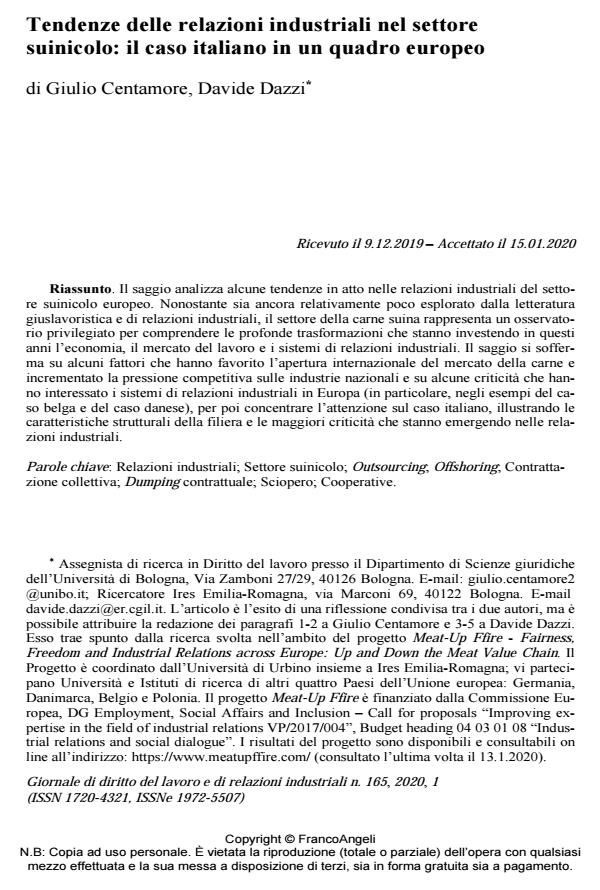Industrial relations in the pork sector: the Italian case in a European framework.
Journal title GIORNALE DI DIRITTO DEL LAVORO E DI RELAZIONI INDUSTRIALI
Author/s Giulio Centamore, Davide Dazzi
Publishing Year 2020 Issue 2020/165
Language Italian Pages 15 P. 57-71 File size 227 KB
DOI 10.3280/GDL2020-165003
DOI is like a bar code for intellectual property: to have more infomation
click here
Below, you can see the article first page
If you want to buy this article in PDF format, you can do it, following the instructions to buy download credits

FrancoAngeli is member of Publishers International Linking Association, Inc (PILA), a not-for-profit association which run the CrossRef service enabling links to and from online scholarly content.
The essay deals with some current trends in the industrial relations of the European pork sec-tor. Although it is still relatively little investigated by the labour law and industrial relations literature, the pork sector represents a privileged observatory to understand the profound trans-formations of the economy, the labour market and the systems of industrial relations. In par-ticular, in its first part, it focuses on some factors that have favored the international opening of the meat market and increased competitive pressure on national industries and on some criti-cisms of the industrial relations systems in Europe (national examples from the Belgian case and the Danish case). Subsequently it focuses on the Italian case, regarding the structural characteristics of the supply chain and the major criticalities that are emerging in the industrial rela-tions.
Keywords: Industrial relations; Pork sector; Outsourcing; Offshoring; Collective bargaining; Strike; Cooperatives.
- Trasformazioni, valori e regole del lavoro Piera Campanella, pp.207 (ISBN:979-12-215-0507-8)
Giulio Centamore, Davide Dazzi, Tendenze delle relazioni industriali nel settore suinicolo: il caso italiano in un quadro europeo in "GIORNALE DI DIRITTO DEL LAVORO E DI RELAZIONI INDUSTRIALI " 165/2020, pp 57-71, DOI: 10.3280/GDL2020-165003